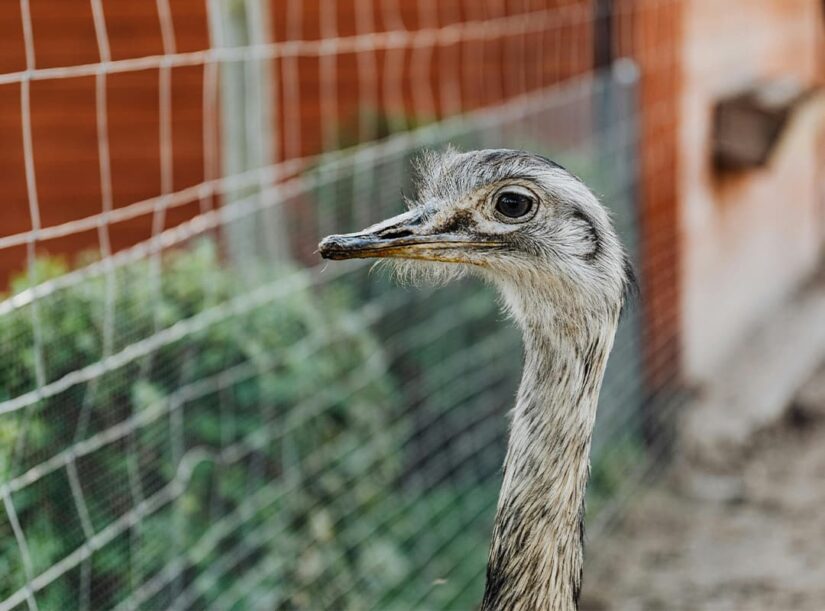Ostrich Farm, a beloved restaurant in Echo Park, Los Angeles, is renowned for its creative cuisine, warm ambiance, and playful nods to the history of ostrich farming. While the restaurant itself doesn’t sell ostriches, many guests are often curious about the cost of owning these unique birds. In this article, we delve into the factors that influence the price of ostriches and provide a general idea of how much they cost.
Factors Influencing Ostrich Prices
Age and Size
One of the primary factors affecting the cost of an ostrich is its age and size. Ostriches are typically categorized into three age groups: chicks, juveniles, and adults. Chicks are the least expensive, while adults, especially those that are breeding-ready, can command higher prices. The size of the ostrich also plays a role, as larger birds require more resources and care.
Health and Genetics
The health and genetic background of an ostrich significantly impact its price. Ostriches with a clean bill of health, free from diseases or genetic disorders, are more valuable. Additionally, birds from strong genetic lines, particularly those bred for specific traits like egg production or meat quality, can be more expensive.
Purpose
The intended purpose of the ostrich also influences its cost. Ostriches can be raised for various reasons, including meat, feathers, eggs, leather, and breeding. Birds bred for high-quality meat or leather production often cost more due to their superior genetics and the specific care they receive. Breeding pairs or proven breeders are also priced higher due to their ability to produce offspring.
Market Demand
Market demand plays a crucial role in determining ostrich prices. In regions where ostrich farming is popular and demand for ostrich products is high, prices may be elevated. Conversely, in areas with less demand, prices might be lower. Seasonal fluctuations can also affect prices, with certain times of the year seeing increased demand for ostrich products.
Location and Transportation
The cost of purchasing an ostrich can vary depending on the buyer’s location and the logistics involved in transporting the bird. Shipping and handling fees can add to the overall cost, especially if the buyer is located far from the ostrich farm near me.
How much does an ostrich cost
While prices can vary widely based on the factors mentioned above, here is a general price range for ostriches in the United States:
- Chicks: Ostrich chicks, typically between a few days to a few months old, can cost anywhere from $50 to $150 each. These young birds are more affordable but require significant care and resources as they grow.
- Juveniles: Juvenile ostriches, aged between 6 months to 2 years, generally range from $500 to $1,500. They are more expensive than chicks due to the care and feeding they have already received.
- Adults: Adult ostriches, especially those ready for breeding or raised for specific purposes, can cost between $2,000 to $10,000 or more. Proven breeders and birds from superior genetic lines are at the higher end of this spectrum.
Additional Costs
Owning an ostrich involves more than just the initial purchase price. Prospective ostrich owners should also consider the following ongoing expenses:
- Feed and Nutrition: Ostriches require a balanced diet to stay healthy and productive. Feed costs can add up, especially for larger flocks.
- Housing and Land: Adequate space and proper housing are essential for ostrich welfare. Owners need to invest in secure fencing and shelter to protect the birds from predators and harsh weather.
- Veterinary Care: Regular veterinary check-ups and vaccinations are crucial to maintaining the health of ostriches. Unexpected medical expenses can also arise.
- Breeding and Incubation: If breeding ostrich egg near me, owners need to invest in proper incubation equipment and manage the breeding process carefully.
While Ostrich Farm in Echo Park doesn’t sell ostriches, understanding the cost of these unique birds can add an interesting dimension to your dining experience. The price of an ostrich egg near me depends on various factors, including age, health, purpose, and market demand. Prospective owners should also be prepared for the ongoing expenses associated with raising and caring for ostriches.
